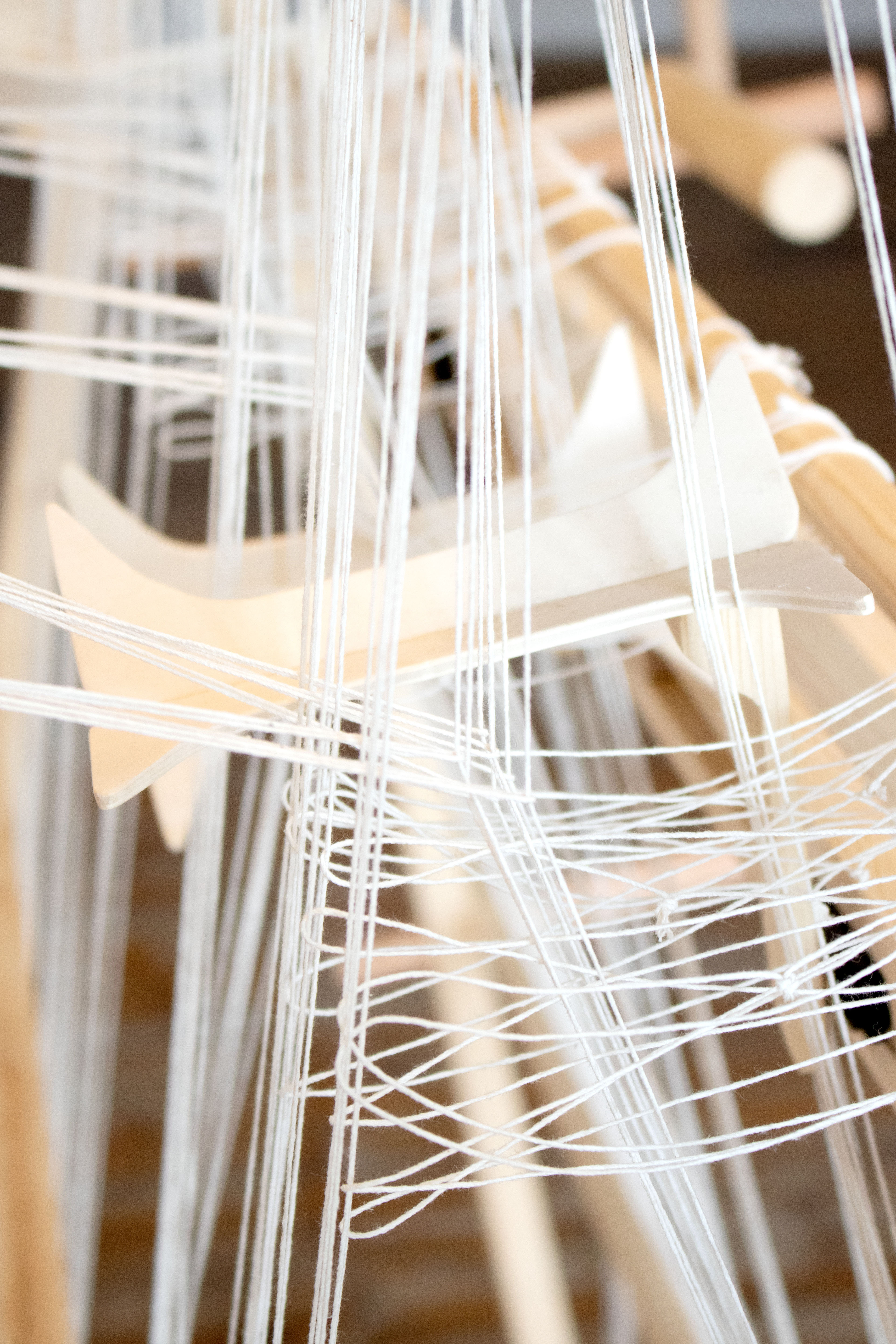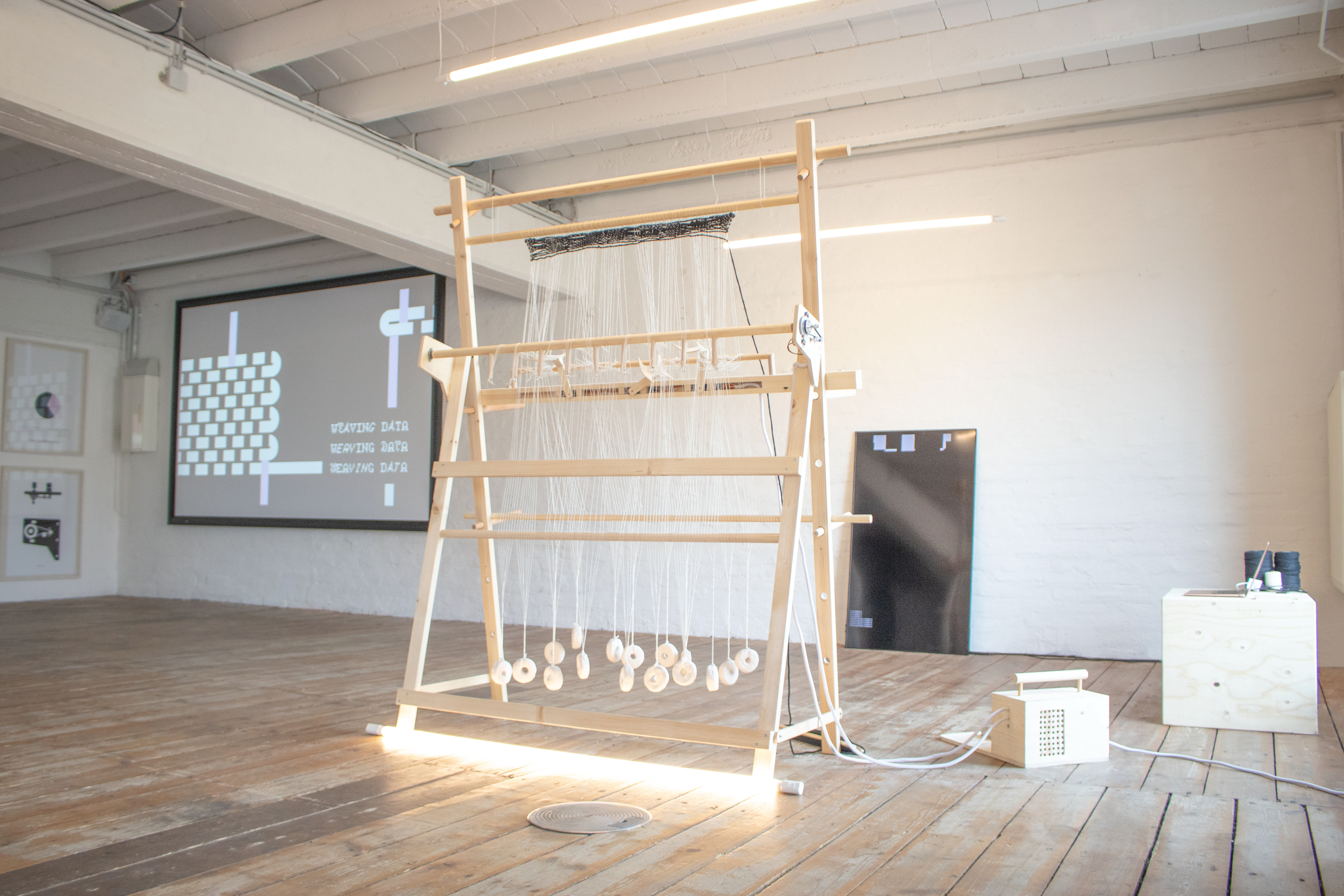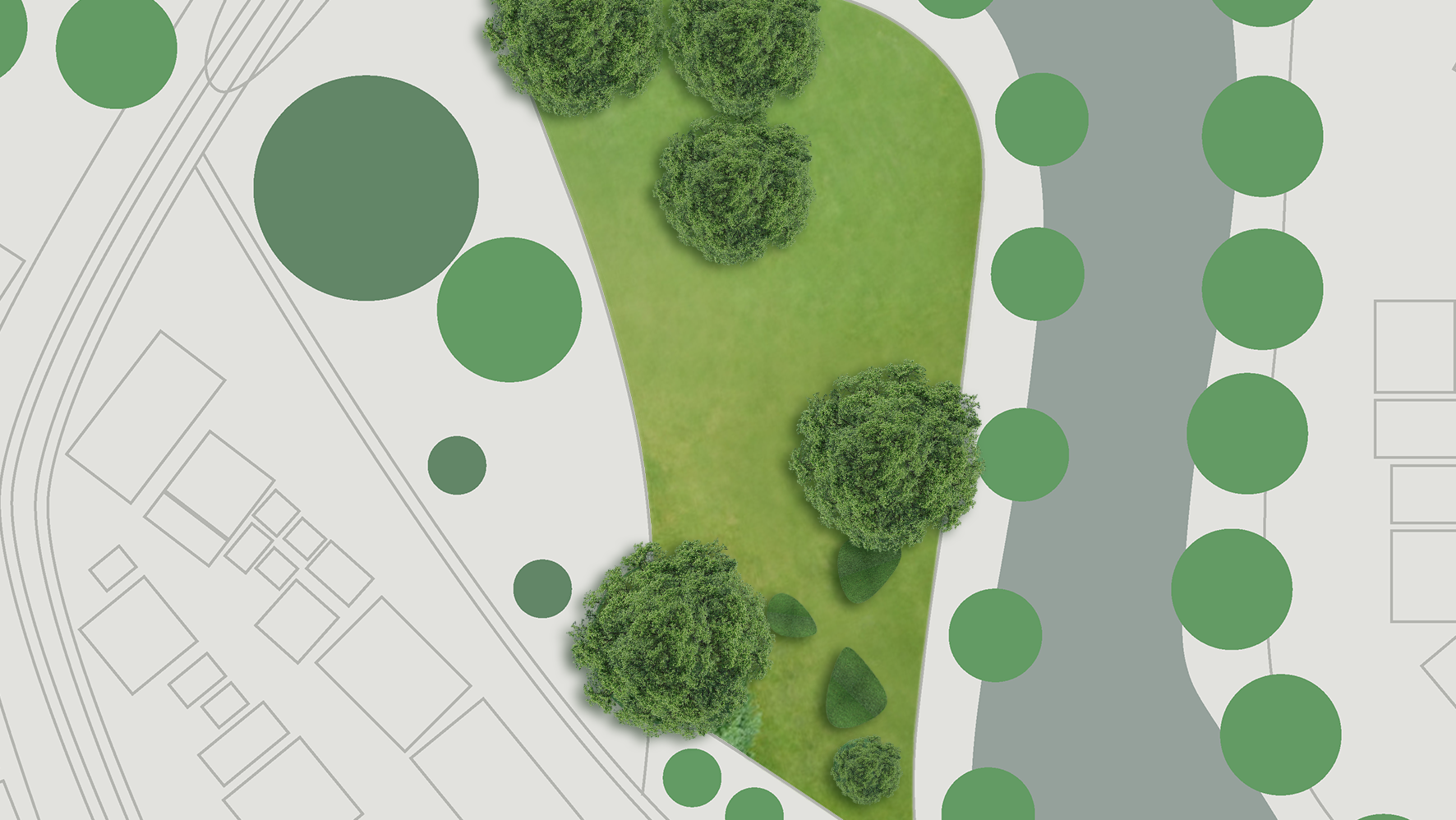WEAVING DATA
Weaving data is an artistic exploration of textile data entanglements and experimentally engages with weaving as a pixel-based imaging process in combination with the concept of data feminist data visualization. As an artistic research tool, a loom has been created, which has been extended with two data-inscribing tools to produce artifacts experimentally. The resulting artefacts store information about the Digital Gender Gap. In doing so, the work examines how different data sets during the write-in of the weaving person in the interaction with the loom and the data set visually to each other and what they and what they can depict interwoven can do. Thus a manual data-driven inscription of a Digital Gender Gap data pool into a Fabric by a weaving person.
The artifact thus not only stores the data, but also maps the interaction of the weaving person with the web object extended by two data-driven tools and can thus be interpreted as data visceralization.
The work attempts a data feminist approach to data by not thinking of the weaving person as separate from the data visualization, but as part of the process. At the same time, it conceives of weaving as a media-historical craft of pixel-based imaging that can be used to interweave different intersectional perspectives on the digital gender gap. The work thus attempts a critique of heteronormative, statistical data collection and the design of an artistic, data feminist practice.
TOOL 1
Manipulation of the orthogonality of
the weft and warp threads.
In order to manipulate the orthogonality of weft and warp with the first tool, this tool 1 had to perform some kind of sliding motion. Therefore, in the first step, I used several servo motors to translate data into an angular position.Since the motors must be seated in the thread system in order to affect it, I designed a heald rod of wood with a notch in the direction of the thread system to admit the motors into it. The data set, which would influence the movement of the motors into an angular position, could thus also represent processes and not only act in binary states.


TOOL 2
Manipulation of patterning by pulling the warp threads.
The second tool manipulates the pattern of the fabric by pulling away warp threads. By using two different colors for the weft and warp threads, the color of the fabric pattern is changed. To achieve this effect, some warp threads should be pulled backwards in the weaving process according to a data set. For this purpose, I designed a wooden rod in which several small wooden rods are inserted in a row. This wooden rod is attached to the back of the weaving frame. Some warp threads are attached to the wooden rods embedded in the wooden rod.



DATASET
How can we work feministically with heteronormative data sets? How can these data sets be criticized for heteronormativity and at the same time be used to depict social problems? Can existing data sets be expanded to include other intersectional perspectives? What could such an extension/interweaving look like?
This gave rise to the idea of combining different data sets and thus depicting several perspectives of a topic. In concrete terms, this means for the first investigation in my loom or the interweaving of these data: Can the combination of differentdata sets also weave together and interweave differentperspectives? Does this create a newer, more diverse pool of data stored and visualized in the fabric? How do different datasets in the fabric interact with each other? How do they function together? The Digital Gender Gap is becoming a reality in the field of tension with rapidly increasing datafication.
For the first study, the dataset is composed of the following statistically collected datasets in order to weave or interweave them in a textile way:
Data set 1
The first data set comes from the aforementioned study by Initiative D21 and is translated with Tool 1, i.e. with the swing of a servo motor at a 180° angle. This is a statistical dataset that surveys the "self-assessment of basic digital skills" of male and female young people aged 14-24 as a percentage. The data set thus paints a picture of the situation of the generation that is in school or academic training and about to enter working life.
This also means that it is this generation that will help shape the labor market and society's work mentality in the coming years through its values and attitudes. Looking at the data, women's self-assessment of their ability to speak at least one programming language and thus to play an active role in digitization in the form of programmed applications is drastic, since it is only 11 percent. This is less than half the percentage of men, whose self-assessment of being able to use at least one programming language is 23 percent.
This also means that it is this generation that will help shape the labor market and society's work mentality in the coming years through its values and attitudes. Looking at the data, women's self-assessment of their ability to speak at least one programming language and thus to play an active role in digitization in the form of programmed applications is drastic, since it is only 11 percent. This is less than half the percentage of men, whose self-assessment of being able to use at least one programming language is 23 percent.
DATA SET 2
The second data set statistically maps the development of data volume in stationary Internet traffic in the fixed network in Germany from 2001 to 2022in billions of gigabytes per year. The increase in data volume is also woven into the fabric using Tool 1. While data set 1 only shows data from the year 2020, data set 2 shows an increase over 20 years, which means that two time levels are stored together in the mesh.
In addition, the different lengths of the data sets result in different lengths of repetitions or patterns in the tissue. In terms of content, data set 2 complements the first data set in the importance of participation in digitized processes, because the general increase in the volume of data can be interpreted as an indication of the increase in digitized processes and the datafication of society.
In addition, the different lengths of the data sets result in different lengths of repetitions or patterns in the tissue. In terms of content, data set 2 complements the first data set in the importance of participation in digitized processes, because the general increase in the volume of data can be interpreted as an indication of the increase in digitized processes and the datafication of society.
DATA SET 3
The third dataset is also interwoven with Tool 1. The dataset collects statistics on the proportion of employed female STEM academics and STEM professionals among all employed STEM academics and STEM professionals in Germany from 2011 to 2019. STEM is an abbreviation for Science, Technology, Engineering, and Mathematics. STEM professions, digitization and datafication are therefore inevitably linked. Combined with datasets 1 and 2, dataset 3 adds another inhat level. While the datafication of society and the digitization of processes are increasing rapidly (data set 2), the proportion of women in STEM professions remains the same. In combination with data set 1, the self-assessment of women's digital skills, the question arises as to whether the digital gender gap can be closed in the near future.
Data Set 4
The fourth dataset is interlaced into the fabric with tool 2 by manipulating the clocking of the lifting of the warp threads. Unlike the other datasets (1-3) in the dataset, the statistically collected value is not translated into an angle, but into a clocking of the movement of the gear motor in position A or position B. Dataset 4 is a statistical survey conducted by the German Institute for Economic Research in 2020 and forms a survey of4. 300 LGBTQI* (Lesbian, Gay, Bisexual,Transgender, Queer, Intersex,* within/outside the gender spectrum) between the ages of 18 and 65 (2020).In doing so, the study shows that the workplace is a relatively common site of discrimination for LGBTQI*. 30% of LGBQTI* have experienced discrimination at work in the last two years, 43% of trans* people. This means about one in three LGBTQI* people experience discrimination in the workplace. For the Digital Gender Gap, there are few to hardly any studies that deal with gender diversity and digitality.
INTERACTION
How does weaving work with the data-based movement of the motors? My thoughts about a data-based control mechanism went hand in hand with thoughts about how autonomously it would execute the weaving. Initially, it was also an idea to create a completely automated process of data and weaving. If the process were purely automated, the design work would be shifted to the preliminary work with the determination of parameters such as coloration, material, and thread strength. The resulting fabric would be an image of these parameters, but also a pure screen.
With the research to the data viszeralisierung, the making experiencable of data, the consideration resulted over an executing handicraft with a data set to interact. To separate the manual weaving mechanism from the executing data set, but to allow both to interact with each other in a semi-automated way.
With the research to the data viszeralisierung, the making experiencable of data, the consideration resulted over an executing handicraft with a data set to interact. To separate the manual weaving mechanism from the executing data set, but to allow both to interact with each other in a semi-automated way.
This results in a cycle of an action syntax of: Operate foot switch, data-driven motors move, open natural shed,i nsert weft, open artificial shed.


DATA SIMULATION
The writing of the datasets is simulated on a screen.
Theoretical elaboration of weaving data as print edition.
Exhibition















